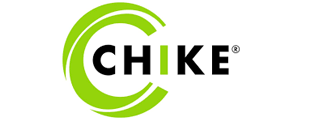Kompleksowy przewodnik po suplementacji kreatyną

Kreatyna jest naturalnie występującą substancją znajdującą się głównie w komórkach mięśniowych. Jest on pozyskiwany ze źródeł dietetycznych, głównie mięsa i owoców morza, z mniejszą częścią wytwarzaną przez organizm.1 Bez żadnej suplementacji, nasze zapasy kreatyny w mięśniach są zazwyczaj nasycone w około 60-80%.2 Ponieważ wegetarianie nie mają znaczącego źródła kreatyny w diecie, ich wyjściowe zapasy kreatyny w mięśniach są zwykle jeszcze niższe i dlatego w większym stopniu korzystają z suplementacji.1,3 Podstawową funkcją kreatyny jest uzupełnianie zapasów trójfosforanu adenozyny. adenozynotrifosforanu (ATP), cząsteczki wykorzystywanej do produkcji energii w naszych komórkach. Podczas krótkich, intensywnych ćwiczeń, zdolność do szybkiej regeneracji ATP jest częściowo ograniczona przez dostępną kreatyninę w mięśniach.
Kreatyna była intensywnie badana od lat 80-tych, kiedy to opublikowano ponad 1000 badań. Podstawową korzyścią wynikającą z suplementacji kreatyną jest zwiększona wydajność na siłowni i na boisku. Większość badań dotyczących poprawy wydajności wykazała poprawę o około 10-20% w ćwiczeniach o wysokiej intensywności. 4 Na przykład, w badaniu przeprowadzonym na mężczyznach trenujących siłowo, grupa otrzymująca kreatynę była w stanie wykonać średnio 1-2 dodatkowe powtórzenia w każdej z pięciu serii wyciskania na ławce.5 Chociaż 1-2 dodatkowe powtórzenia mogą nie wydawać się dużą liczbą, z czasem zdolność do wykonania 10-20% więcej powtórzeń przekłada się na zwiększoną budowę mięśni i przyrost siły.
Czy kreatyna działa dla każdego?
Chociaż kreatyna była badana głównie u mężczyzn, większość badań dotyczących kobiet wydaje się wykazywać podobne korzyści.6-8 W rzeczywistości niektóre badania sugerują nawet większą odpowiedź na kreatynę u kobiet niż u mężczyzn.9 Dodatkowo, suplementacja kreatyną była szeroko badana u osób starszych, dając podobne wyniki.10 Niestety, efekty stosowania kreatyny nie są uniwersalne - wydaje się, że u poszczególnych osób występuje zmienna reakcja, od prawie braku poprawy wydajności do dość wyraźnej poprawy.11 Chociaż niektórzy ludzie mogą nie mieć tak silnej reakcji, prawdopodobnie warto spróbować kreatyny. Jest uważany za najskuteczniejszy suplement dostępny w celu poprawy zdolności wysiłkowych i wspomagania budowy mięśni.2
Czy jest to bezpieczne?
Ponieważ kreatyna jest jednym z najlepiej przebadanych suplementów diety, a dane na jej temat pochodzą z ponad 30 lat, mamy wiele dowodów potwierdzających jej bezpieczeństwo. Istnieją różne twierdzenia, że kreatyna może powodować odwodnienie i skurcze mięśni, choć najlepsze badania tego nie wykazują.12 Ponadto istnieje błędne przekonanie, że kreatyna może powodować problemy z nerkami. Zarówno krótko-, jak i długoterminowe badania na różnych populacjach, od młodych i zdrowych po chorych i starszych, nie wykazały żadnych negatywnych skutków.13-15
Czy istnieją efekty uboczne?
Jedynym efektem ubocznym, który jest spójny we wszystkich badaniach, jest niewielki przyrost masy ciała - głównie z powodu zwiększonej retencji wody w mięśniach. Chociaż nie każdy przybierze na wadze dzięki kreatynie, większość badań wykazała średnio nieco ponad 1 kg u osób ważących około 75 kg, z zakresem od 1 kg do 3 kg.16,17
Jak przyjmować kreatynę?
Kreatyna występuje w różnych formułach, choć najtańszą, najpopularniejszą i najlepiej przebadaną jest monohydrat kreatyny. Monohydrat kreatyny zazwyczaj występuje zarówno w postaci tabletek, jak i proszku, które są równie skuteczne. Efekty działania kreatyny są widoczne tylko wtedy, gdy mięśnie są wystarczająco nasycone. Istnieją dwie opcje przyjmowania kreatyny: ładowanie i nieładowanie.
- Ładowanie: 0,3 g/kg masy ciała przez 5-7 dni, a następnie 5 g dziennie. Obciążenie pozwala danej osobie nasycić mięśnie kreatyną w ciągu około tygodnia i zacząć widzieć rezultaty. Wadą ładowania jest duża ilość kreatyny przyjmowana w ciągu dnia. Chociaż zaburzenia żołądkowo-jelitowe nie są konsekwentnie obserwowane w najbardziej solidnych badaniach naukowych, pojedyncze badanie sugeruje, że są one bardziej rozpowszechnione, gdy spożywane są dawki większe niż 5 g na porcję.18
- Nie ładuje się: Przyjmuj 5 g dziennie. Zazwyczaj potrzeba około 3-4 tygodni, aby mięśnie nasyciły się kreatyną. Bądź cierpliwy.
Czas suplementacji kreatyną w stosunku do sesji treningowej jest często dyskutowany, chociaż nie ma zbyt silnego naukowego argumentu za tym, kiedy należy spożywać kreatynę, aby uzyskać maksymalne korzyści. Większość badań nie kładła nacisku na czas stosowania kreatyny. Pojedyncze małe badanie przeprowadzone na starszych osobach dorosłych nie wykazało żadnej różnicy w przypadku podawania przed i po treningu,19 , podczas gdy inne małe badanie na młodych kulturystach rekreacyjnych wykazało marginalną poprawę składu ciała i maksymalną liczbę powtórzeń wyciskania na ławce (RM).20 Jeśli zwykle spożywasz potreningowy koktajl białkowy, równie dobrze możesz dodać do niego kreatynę, aby uzyskać ewentualne korzyści, ale nie martw się, jeśli spożywasz ją przed treningiem.
W przeciwieństwie do suplementów takich jak kofeina, w przypadku których Twój organizm rozwija tolerancję, a efekty słabną z czasem, działanie kreatyny jest trwałe i nie wymaga od Ciebie cyklicznego jej przyjmowania i odstawiania.
Niektórzy zalecają spożywanie kreatyny w połączeniu z dużą ilością węglowodanów, aby poprawić wchłanianie i całkowite zapasy kreatyny w mięśniach. Prawdą jest, że węglowodany pomagają dostarczyć kreatynę do mięśni, choć nie przeprowadzono badań, które wykazałyby korzyści wydajnościowe tej strategii.21,22
Oprócz monohydratu kreatyny istnieją inne formy kreatyny, takie jak chlorowodorek kreatyny (HCl) i ester etylowy kreatyny (CEE). Obecna literatura naukowa nie potwierdza tezy, że te formy kreatyny są lepsze od monohydratu kreatyny.23 Główną zaletą kreatyny HCl jest to, że łatwiej rozpuszcza się w wodzie, choć jest nieco droższa. Niektórzy twierdzą, że całkowita dawka wymagana dla kreatyny HCl jest mniejsza niż w przypadku monohydratu, ale nigdy nie zostało to zbadane. Z drugiej strony CEE nie wydaje się być tak skuteczny jak monohydrat kreatyny i wydaje się być równy placebo.24
Podsumowując, kreatyna jest bezpieczna, wysoce skuteczna i tania. Przyjmuj kreatynę codziennie... zgodnie z zaleceniami lekarza!
Referencje:
- Brosnan ME, Brosnan JT. Rola kreatyny w diecie. Amino Acids. 2016;48(8):1785-1791.
- Kreider RB, Kalman DS, Antonio J, et al. Stanowisko Międzynarodowego Towarzystwa Żywienia Sportowego: Bezpieczeństwo i skuteczność suplementacji kreatyną w ćwiczeniach, sporcie i medycynie. . 2017:1-18.
- Burke DG, Chilibeck PD, Parise G, Candow DG, Mahoney D, Tarnopolsky M. Wpływ kreatyny i treningu siłowego na kreatynę mięśniową i wydajność u wegetarian. Medycyna i nauka w sporcie i ćwiczeniach. 2003;35(11):1946-55.
- Kreider RB. Wpływ suplementacji kreatyną na wydajność i adaptacje treningowe. Molecular and Cellular Biochemistry. 2003;244(1-2):89-94.
- Volek JS, Kraemer WJ, Bush Ja, et al. Suplementacja kreatyną zwiększa wydajność mięśni podczas ćwiczeń oporowych o wysokiej intensywności. Journal of the American Dietetic Association. 1997;97(7):765-770.
- Kresta JY, Oliver JM, Jagim AR, et al. Wpływ 28-dniowej suplementacji beta-alaniną i kreatyną na karnozynę mięśniową, skład ciała i wydajność ćwiczeń u kobiet aktywnych rekreacyjnie. Journal of the International Society of Sports Nutrition. 2014;11(1):55.
- Larson-Meyer DE, Hunter GR, Trowbridge CA, et al. Wpływ suplementacji kreatyną na siłę mięśni i skład ciała podczas treningu poza sezonem u zawodniczek piłki nożnej. Journal of Strength and Conditioning Research. 2000;14(4):434-442.
- Vandenberghe K, Goris M, Van Hecke P, Van Leemputte M, Vangerven L, Hespel P. Długotrwałe przyjmowanie kreatyny jest korzystne dla wydajności mięśni podczas treningu oporowego. Journal of applied physiology. 1997;83(6):2055-63.
- Oddział JD. Wpływ suplementacji kreatyną na skład ciała i wydolność: A meta-analysis. International Journal of Sport Nutrition and Exercise Metabolism. 2003;13(2):198-226.
- Chilibeck PD, Kaviani M, Candow DG, Zello GA. Wpływ suplementacji kreatyną podczas treningu oporowego na masę tkanki beztłuszczowej i siłę mięśni u osób starszych: A meta-analysis. Open access journal of sports medicine. 2017;8:213-226.
- Syrotuik DG, Bell GJ. Ostra suplementacja monohydratem kreatyny: Opisowy profil fizjologiczny osób reagujących i niereagujących. Journal of Strength and Conditioning Research. 2004;18(3):610-617.
- Kreider RB, Kalman DS, Antonio J, et al. Stanowisko Międzynarodowego Towarzystwa Żywienia Sportowego: Bezpieczeństwo i skuteczność suplementacji kreatyną w ćwiczeniach, sporcie i medycynie. Journal of the International Society of Sports Nutrition. 2017;14(1):1-18.
- Gualano B, Ugrinowitsch C, Novaes RB, et al. Wpływ suplementacji kreatyną na czynność nerek: Randomizowane, podwójnie zaślepione, kontrolowane placebo badanie kliniczne. European journal of applied physiology. 2008;103(1):33-40.
- Groeneveld GJ, Veldink JH, van der Tweel I, et al. Randomizowane badanie sekwencyjne kreatyny w stwardnieniu zanikowym bocznym. Annals of neurology. 2003;53(4):437-45.
- Neves M, Gualano B, Roschel H, et al. Wpływ suplementacji kreatyną na mierzony wskaźnik filtracji kłębuszkowej u kobiet po menopauzie. Fizjologia stosowana, żywienie i metabolizm = Physiologie appliquee, nutrition et metabolisme. 2011;36(3):419-22.
- Powers ME, Arnold BL, Weltman AL, et al. Suplementacja kreatyną zwiększa całkowitą ilość wody w organizmie bez zmiany dystrybucji płynów. Journal of Athletic Training. 2003;38(1):44-50.
- Demant T, Rhodes E. Wpływ suplementacji kreatyną na wydajność ćwiczeń. Sports Medicine. 1999;28(1):49-60.
- Ostojic SM, Ahmetovic Z. Zaburzenia żołądkowo-jelitowe po suplementacji kreatyną u sportowców: Czy skutki uboczne są zależne od dawki? Research in Sports Medicine. 2008;16(1):15-22.
- Candow DG, Zello GA, Ling B, et al. Porównanie suplementacji kreatyną przed i po nadzorowanym treningu oporowym u zdrowych osób starszych. Research in sports medicine (Print). 2014;22(1):61-74.
- Antonio J, Ciccone V. Wpływ suplementacji monohydratu kreatyny przed i po treningu na skład ciała i siłę. Journal of the International Society of Sports Nutrition. 2013;10:1-8.
- Steenge GR, Simpson EJ, Greenhaff PL. Indukowane białkami i węglowodanami zwiększenie retencji kreatyny w całym organizmie u ludzi. Journal of applied physiology 2000;89(3):1165-71.
- Green AL, Hultman E, Macdonald IA, Sewell DA, Greenhaff PL. Spożycie węglowodanów zwiększa akumulację kreatyny w mięśniach szkieletowych podczas suplementacji kreatyną u ludzi. Amerykańskie czasopismo fizjologiczne. 1996
- Jäger R, Purpura M, Shao A, Inoue T, Kreider RB. Analiza skuteczności, bezpieczeństwa i statusu prawnego nowych form kreatyny. Amino acids. 2011;40(5):1369-1383.
- Spillane M, Schoch R, Cooke M, et al. Wpływ suplementacji estrem etylowym kreatyny w połączeniu z ciężkim treningiem oporowym na skład ciała, wydajność mięśni oraz poziom kreatyny w surowicy i mięśniach. Journal of the International Society of Sports Nutrition. 2009;6:1-14.
WYŁĄCZENIE ODPOWIEDZIALNOŚCI:Celem niniejszej Strefy Zdrowia nie jest stawianie diagnoz...














































































